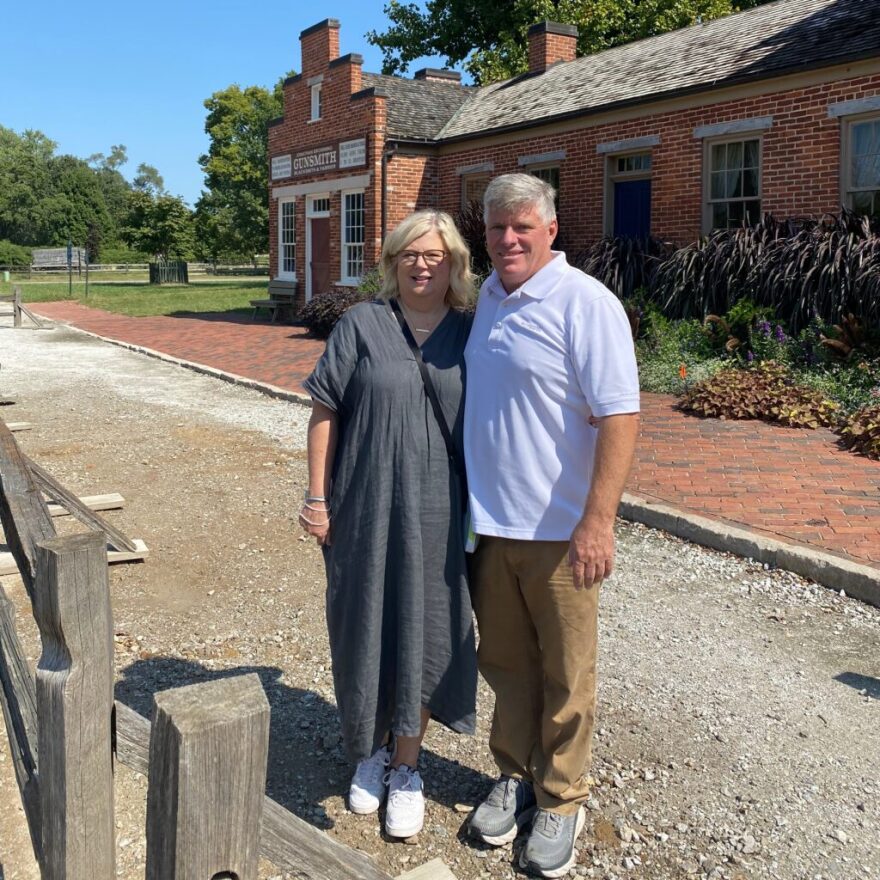Over the course of three decades of teaching in rural southern Idaho, Jan Kidd dealt with her fair share of change and challenges, and she had always been able to handle whatever came her way. She’s not an idle person — she likes to stay busy teaching kids about graphic design, accounting and business mathematics.
But when the school district told Kidd and her colleagues at Declo High School in spring 2020 that they had 24 hours to be ready to start online learning, she was thrust into chaos.
“We were not prepared. We were not prepared one bit,” Kidd said.
Kidd, 57, was one of the most technologically savvy people in the high school, which made her a go-to resource for anyone who needed help. Cassia County School District had little infrastructure for online learning, she said, and had to send a bus equipped with wifi to one of the rural areas so students could park and use the wifi connection.
“In 33 years, it was the hardest thing I’ve ever done,” Kidd said. “… That first week I ended up at the doctor and they had to put me on anxiety medication because I wasn’t going to make it.”
So at least a year earlier than planned, Kidd decided she was done and retired.
“I may have still been going without the pandemic,” she said. “I’ve got students that have done such fabulous things, and I would love them to know their potential, but I just couldn’t do it anymore.”
She’s one of millions of baby boomers — those who were born between 1946 and 1964 — who retired in 2020. According to Pew Research, about 28.6 million boomers retired between July and September last year, which is 3.2 million more than retirements in the same quarter of 2019 and twice as many as economists had predicted.
It’s one factor behind the strange situation of near-historic low unemployment rates in Idaho coupled with labor shortages in certain industries across the state, according to Idaho Department of Labor Research Supervisor Craig Shaul.
“People are saving more money because they don’t have much to do, and they’re just retiring early,” Shaul said.
Retirements in K-12 education in Idaho were up in 2020 compared to 2018 and 2019, according to records from the Idaho State Board of Education. Between Jan. 1 and Dec. 31, 2020, 668 educators retired, compared to 511 in 2019 and 428 in 2018. But overall, school districts reported high teacher retention rates through the pandemic, according to Idaho Education News.
Many factors behind Idaho’s low unemployment rate, high job availability
Earlier this month, the Idaho Department of Labor reported Idaho’s seasonally adjusted unemployment rate had dropped another one-tenth of a percent to 2.9%, the lowest it has been since March 2020. Federal benefits that increased unemployment payments to claimants ended in mid-June, and only about 3,200 out of more than 26,000 unemployed people across the state are still collecting benefits.
The reason the rate went down, Shaul said, is that Idaho had its largest labor force growth in 18 months between July and August, and all of the workers who joined were already employed.
“What’s happening here and why you’re seeing ‘Help Wanted’ signs still is there’s a nationwide challenge for employers to fill positions right now, and Idaho is experiencing that because its economy has been performing better than the nation over the past year and a half,” Shaul said. “… (And the retiring) portion of the population is still consuming goods and services and fueling economic demand.”
Retirements are one reason the state’s overall labor participation rate, which reflects the available working-age population that is either employed or actively seeking employment, has declined from 64.1% in 2019 to 62.5% in 2021. That’s a bigger drop than expected.
“It didn’t come back with (COVID-19) vaccinations. In fact, it seems to be continuing downward,” he said.
At the other end of the spectrum, Shaul said there is a lower rate of participation among young people who are more often going to school full time or otherwise choosing not to seek employment.
COVID accelerated existing trends in Idaho employment, researcher says
Another big factor is that many people are able to live in an Idaho city but work remotely for a company out of state, according to Shaul. On an anecdotal level, people can live in a city like Pocatello and earn twice as much with a remote position based in California. That siphons off another portion of the available workforce.
“What the pandemic kind of did was accelerate trends that were there before,” Shaul said. Younger age participation rates had already been declining, and retirements were expected to be an issue with the aging baby boomer population.
For people like Claudia Krone of Moscow, retirement came about five years earlier than she’d planned because she didn’t feel safe teaching voice lessons anymore at the University of Idaho after 25 years.
Krone, 66, decided before school started in the fall semester of 2020 that her tiny studio wasn’t a good environment to be in with singers and theater students who laugh, sing and talk loudly when the COVID virus is mostly spread via airborne water droplets. It was a difficult decision, she said, but with three grandchildren in Boise, she wanted to make sure she was safe to be around them too.
“My husband and I went back and forth all summer, and (my son) too was saying, ‘You shouldn’t do it, you don’t really have to,’” Krone said. “It just isn’t worth the risk.”
She’s still teaching a few students privately for free because she believes in their talents, but it hasn’t been easy to stop teaching full time.
“It’s hard,” Krone said. “I miss my students and they’re very important to me. To me, it was more than a job.”



